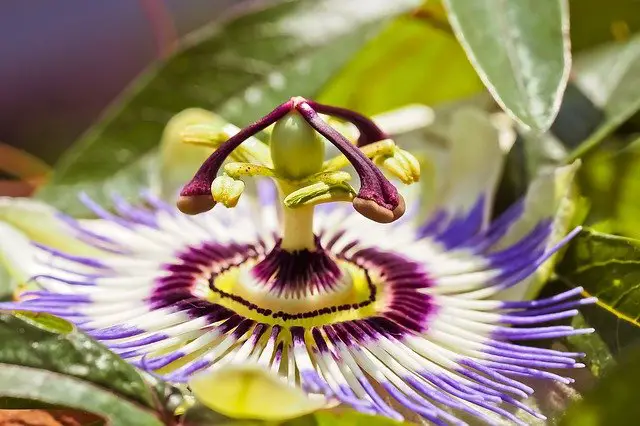Plant Form and Functions

The recent pandemic made life difficult for everyone. Like a sprout in need of nurture, some of us turned to plant collection as a hobby in order to offset some of the negative impacts of the pandemic on our well-being and mental health.
Speaking of plants, I am reminded of one of the Philippine’s prominent botanists – Mr. Leonardo Legaspi Co who died, ironically, where he was most comfortable, inside a forest teeming with indigenous trees. His death remains unresolved, yet his contributions to advancing the study of Philippine plants are a gift.
As a tribute to him, a website dedicated to forming a repository of known Philippine plants has been created: Co’s Digital Flora of the Philippines. You might want to check it out if you’d like to learn more about the great plant diversity our country has.
To help you appreciate plants more, here’s a reviewer that covers and reviews different aspects of Plant Biology.
Click below to go to the main reviewers:
Table of Contents
- Major Groups of Angiosperms
- Plant Organs
- Plant Tissue Systems
- Plant Cell Types
- Plant Growth
- Reproduction in Flowering Plants
- Plant Nutrition and Transport
- Plant Nutrients and the Soil
- Plant Hormones
- Plant Responses to Stimuli
- References
Major Groups of Angiosperms
Jump-start your review of plant biology with angiosperms, which are classified into two–monocots and dicots. Click here to go to the article.
Plant Organs
Let’s dissect a typical plant and explore the different structures and organs that help it carry out its daily functions. Click here to go to the article.
Plant Tissue Systems
Like most animals, the organs of plants contain tissues with characteristic functions. Learn more about plant tissue systems in this reviewer. Click here to go to the article.
Plant Cell Types
Viewed under a microscope, what looks to be stationary on the outside is actually teeming with life. In this reviewer, you’ll learn the different types of plant cells that may look different from each other but all accomplish one goal–to ensure the plant’s survival. Click here to go to the article.
Plant Growth
Although plants are stationary, they still respond to the environment by altering their growth. Learn about the two ways plants grow–primary growth and secondary growth. Click here to go to the article.
Reproduction in Flowering Plants
With the help of this reviewer, you’ll be able to understand the structures and processes involved in the fascinating sexual reproduction in flowering plants. Click here to go to the article.
Plant Nutrition and Transport
Just like animals, plants also rely on nutrition to survive. In this reviewer, you’ll learn how water and sugars are transported in plants and the mechanisms that make such transport possible. Click here to go to the article.
Plant Nutrients and the Soil
Most plants derive essential nutrients from the soil. But sometimes, they also need the help of other organisms to meet their nutritional needs. Discover the different facets of plant nutrition in this reviewer. Click here to go to the article.
Plant Hormones
Much like animals, hormones control the body-wide responses in plants. Let’s summarize these hormones and their effects on plant growth. Click here to go to the article.
Plant Responses to Stimuli
Plants are capable of responding to environmental stimuli, whether it’s light, touch, gravity, or the relative lengths of day and night. They also interact with other organisms either positively through mutualistic relationships, or negatively by employing different types of defenses. Learn more about how plants “behave” in this concise reviewer. Click here to go to the article.
References
Campbell, N. A., Cain, M. L., Minorsky, P. V., Reece, J. B., Urry, L. A., & Wasserman, S. A. (2018). Biology: A global approach. Harlow, Essex, England: Pearson Education Limited.
Fowler, S., Roush, R., & Wise, J. (2013). Concepts of Biology. Houston, Texas: OpenStax. Available at https://openstax.org/books/concepts-biology/pages/1-introduction.
Hine, R. (2019). A Dictionary of Biology. Oxford, US: Oxford University Press.
Hollingsworth, P. M., Bateman, R. M., Gornall, R. J., & Conference on Advances in Plant Molecular Systematics. (1999). Molecular systematics and plant evolution. New York: Taylor & Francis.
Karp, G., Iwasa, J., & Marshall, W. (2018). Cell biology. Hoboken, NJ: John Wiley.
Pelser, P.B., J.F. Barcelona & D.L. Nickrent (eds.). 2011 onwards. Co’s Digital Flora of the Philippines. www.philippineplants.org
Reece, J. B., & Campbell, N. A. (2011). Campbell Biology. Boston: Benjamin Cummings/Pearson.
Simpson, M. G. (2019). Plant Systematics. Amsterdam Academic Press.
Taylor, M. R., Simon, E. J., Dickey, J., Hogan, K. A., & Reece, J. B. (2018). Campbell Biology: Concepts & connections. NY: Pearson.
Next topic: The Principles of Ecology
Previous topic: Animals (Forms and Functions)
Return to the main article: The Ultimate Biology Reviewer
Written by Earl Jeroh Bacabac
in College Entrance Exam, LET, NMAT, Reviewers, UPCAT
Earl Jeroh Bacabac
Earl’s love for the sea fueled his goal to become a marine biologist. He obtained his Bachelor’s Degree in Biology from the University of the Philippines Visayas while also being a DOST scholar. His passion for the marine environment is rivaled by his diverse interests in music, the arts, and video games.
Copyright Notice
All materials contained on this site are protected by the Republic of the Philippines copyright law and may not be reproduced, distributed, transmitted, displayed, published, or broadcast without the prior written permission of filipiknow.net or in the case of third party materials, the owner of that content. You may not alter or remove any trademark, copyright, or other notice from copies of the content. Be warned that we have already reported and helped terminate several websites and YouTube channels for blatantly stealing our content. If you wish to use filipiknow.net content for commercial purposes, such as for content syndication, etc., please contact us at legal(at)filipiknow(dot)net